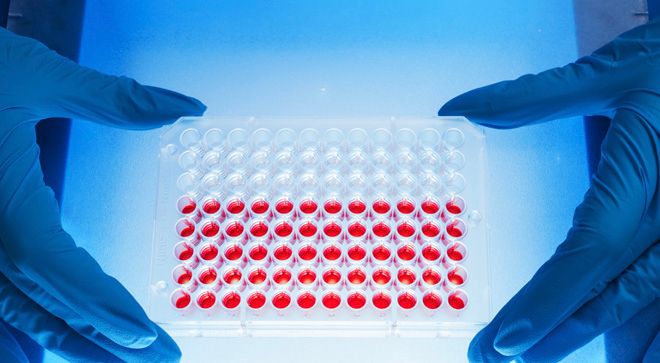News
Article
Liquid Biopsy May Be Helpful for Treatment Decisions in ROS1-Positive NSCLC
Certain patients with non-small cell lung cancer who are treatment-naive may benefit from receiving a biopsy regarding treatment decision-making.
Genomic testing via liquid biopsies may be beneficial for patients with non-small cell lung cancer who have not previously received treatment.

Receiving genomic testing (looking for cancer cells and potential mutations being shed in the blood) via a liquid biopsy can be valuable in treatment decision-making for patients with ROS1-positive advanced or metastatic non-small cell lung cancer (NSCLC), according to a study.
A recent study published in Nature Medicine analyzed findings regarding patients with ROS1-positive NSCLC in the phase 2/3 BFAST trial. Of 5,220 patients with NSCLC who were screened, 92 patients were identified with ROS1-positive NSCLC, the researchers reported. Among the 92 patients with ROS1-positive NSCLC, 55 had never previously received treatment.
Of note, the study only focused on one group of patients in the BFAST trial who had ROS1-positive NSCLC and received oral Rozlytrek (entrectinib). The median duration of follow-up in this treatment group was 18.3 months.
Treatment responses were assessed in 54 patients with measurable disease, in which 44 patients showed responses, according to the study. Two patients had a complete response (no longer showed signs of disease) and 42 had a partial response (cancer shrunk after treatment, but did not go away), researchers found. The median duration of response was 13 months and the median progression-free survival (time patients live without their disease worsening or spreading) was 12.9 months.
Regarding safety, the 55 patients who previously did not receive treatment were included in the safety population, the study stated. The median duration of treatment with Rozlytrek was 12.8 months.
Most treatment-related side effects were nonserious and no deaths from treatment were reported, the researchers established. Seven of the 55 patients experienced at least one or more of these serious treatment-related side effects: cerebellar syndrome (causes balancing problems and hand coordination difficulties), cognitive disorder, memory impairment, cardiac failure, left ventricular dysfunction, pleural effusion (abnormal fluid between lungs and chest), interstitial lung disease (scarring on the lungs), ankle fracture and fluid retention.
Patients in the Rozlytrek group were screened for gene mutations or alterations using liquid biopsies via blood samples. In a separate group, 94 patients with approximately 12 months of follow-up or less were enrolled to evaluate tissue-based testing. These patients also received Rozlytrek and had ROS1-positive NSCLC, the researchers noted. The median duration of follow-up was relatively similar in the tissue-based group (20.9 months), compared with patients in the BFAST trial (18.3 months).
READ MORE: Lung Cancer PD-L1 Expression Does Not Affect Efficacy of Xalkori
Additional biomarker analyses were done to evaluate the amount of circulating tumor DNA (ctDNA; DNA from cancer cells in the bloodstream) levels and the tumor response to treatment. Importantly, “there is no clear relationship between levels of ctDNA and clinical response [to treatment],” the researchers wrote.
They noted that additional studies are necessary to establish whether ctDNA testing can be a helpful tool when patients and their providers make treatment decisions.
Researchers also evaluated plasma samples to identify resistance to Rozlytrek in 20 patients who experienced disease worsening or spreading. Of note, 14 patients had ROS1 fusions that were identified after stopping the treatment.
“Due to the small number of patients in BFAST, further research is required to validate the findings from these exploratory biomarker analyses,” the researchers wrote. “Furthermore, because BFAST is a single-arm study (one available treatment option), it is not possible to deduce whether any of these factors are predictive biomarkers of benefit from [Rozlytrek].”
For more news on cancer updates, research and education, don’t forget to subscribe to CURE®’s newsletters here.




